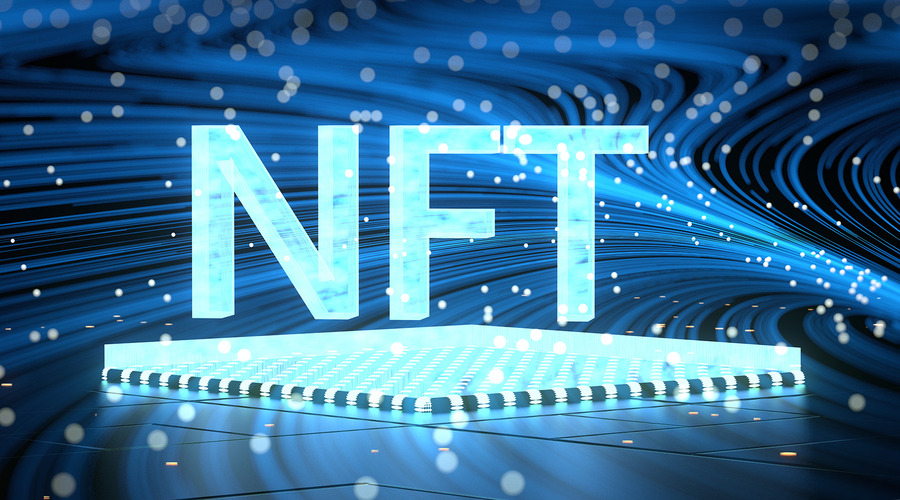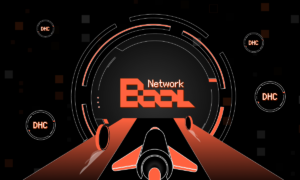NFTs and Transportation: Transforming the Future of Travel

NFTs and Transportation: Transforming the Future of Travel
The use of non-fungible tokens (NFTs) has revolutionized many industries, such as art, music, and gaming. However, the potential for NFTs extends beyond these fields, and transportation is one such area where NFTs can make a significant impact. In this article, we will explore how NFTs can transform transportation systems and revolutionize the way we travel.
What are NFTs?
Before we dive into the potential for NFTs in transportation, let’s first define what they are. NFTs are unique digital assets that represent ownership of a particular item, such as an image or a video. Unlike traditional cryptocurrencies, NFTs cannot be exchanged for an equal value as they are one-of-a-kind assets.
NFTs in Transportation
The vast transportation industry encompasses many areas, from public transportation to personal vehicles. Here are some ways NFTs can transform transportation:
1. Vehicle Ownership
NFTs can revolutionize the way we buy and sell vehicles. With NFTs, vehicle ownership can be represented by a unique digital asset that cannot be duplicated, making it easier to verify ownership and prevent fraud. Additionally, NFTs can make it easier to sell vehicles as the ownership transfer can be completed quickly and securely.
2. Ticketing Systems
NFTs can also transform ticketing systems for public transportation. Instead of physical tickets, passengers can purchase an NFT that represents their fare. This can make ticketing systems more efficient and secure, as well as providing passengers with a unique and collectible digital asset.
3. Infrastructure Maintenance
NFTs can also play a role in the maintenance of transportation infrastructure, such as roads and bridges. Governments and private organizations can issue NFTs that represent ownership of a particular stretch of road or bridge. Owners of these NFTs can then receive rewards for the maintenance and upkeep of the infrastructure.
4. Ride-Sharing
NFTs can also transform the ride-sharing industry. Instead of using traditional payment methods, passengers can purchase NFTs that represent their fare. This can make the payment process more secure and transparent, as well as providing passengers with a unique digital asset that can be collected or traded.
5. Loyalty Programs
NFTs can also be used to create loyalty programs for transportation companies. Passengers can earn NFTs for frequent travel or other actions, which can then be redeemed for rewards or discounts on future travel.
Potential Future Applications of NFTs in Transportation
In addition to the ways that NFTs can already be applied to transportation, there are several potential future applications as well.
1. Smart Contracts for Insurance and Claims
Smart contracts are self-executing contracts with the terms of the agreement between buyer and seller being directly written into lines of code. They can be used to automate insurance policies and claims processing. In transportation, smart contracts can be used with NFTs to provide automated insurance policies for vehicles or infrastructure. This could make the claims process faster and more efficient, reducing the workload for insurance companies and providing a smoother experience for policyholders.
2. Carbon Credits
Many countries are implementing carbon credit systems to incentivize businesses to reduce their carbon footprint. NFTs could be used to represent carbon credits, making it easier to trade and verify them. This could provide a more transparent and efficient way of trading carbon credits, reducing fraud and making it easier for businesses to offset their carbon emissions.
3. Vehicle Data Tracking
As vehicles become more connected, they generate large amounts of data that can be used for a variety of purposes. NFTs could be used to represent ownership of this data, allowing vehicle owners to sell or share it with third parties. This could create a new market for vehicle data, providing valuable insights for businesses and researchers.
4. Personalized Travel Experiences
NFTs could also be used to create personalized travel experiences. Passengers could purchase NFTs that represent a specific journey, which could be customized based on their preferences. For example, a passenger could purchase an NFT for a train journey and choose the type of seating, meals, and entertainment options they prefer.
Examples of NFTs in Transportation
While NFTs are a relatively new technology, there are already some examples of their use in transportation. Here are a few examples:
1. The World’s First NFT-Powered Road
In March 2021, a Dutch company called ‘We the Valley’ introduced the world’s first NFT-powered road. The road, which is located in the Netherlands, is made from recycled plastic and is powered by NFTs. The NFTs represent ownership of the road and provide rewards to owners based on the amount of energy generated by the road. This is a unique example of how NFTs can be used to incentivize sustainable transportation infrastructure.
2. Collectible Transportation Tokens
Several companies are already using NFTs to create collectible tokens related to transportation. For example, a company called CryptoMotors has created NFTs that represent ownership of digital cars that can be used in a variety of virtual environments. Another company called Autograph has created NFTs that represent ownership of rare and collectible cars.
3. NFT-Enabled Ticketing Systems
Some transportation companies are already exploring the use of NFTs in their ticketing systems. For example, the Los Angeles Clippers basketball team has introduced an NFT-powered ticketing system that allows fans to purchase unique and collectible digital tickets. This system could potentially be applied to public transportation systems as well.
4. Blockchain-Powered Ride-Sharing
Several companies are exploring the use of blockchain and NFTs in ride-sharing. For example, a company called RideSafe has created an NFT-powered ride-sharing platform that allows drivers and passengers to connect directly, without the need for a middleman. The NFTs represent ownership of the ride, making it more secure and transparent.
Benefits of NFTs in Transportation

There are several benefits of using NFTs in transportation, including:
1. Enhanced Security
One of the key benefits of NFTs is their enhanced security. NFTs cannot be duplicated or counterfeited, making them an ideal way to represent ownership of assets such as vehicles or infrastructure. This can reduce the risk of fraud and improve the overall security of transportation systems.
2. Improved Efficiency
The use of NFTs in transportation can also improve efficiency. For example, NFT-powered ticketing systems can be more efficient than traditional paper or digital tickets, reducing the time and resources required for ticket processing. Similarly, NFT-powered ride-sharing platforms can connect drivers and passengers more quickly and easily, reducing wait times and improving the overall efficiency of the system.
3. Increased Transparency
NFTs can also increase transparency in transportation systems. For example, the use of NFTs to represent ownership of carbon credits can make the trading process more transparent, reducing the risk of fraud and ensuring that businesses are able to offset their carbon emissions in a fair and transparent way.
4. New Revenue Streams
NFTs can also create new revenue streams for transportation companies. For example, companies could sell NFTs that represent ownership of specific routes or infrastructure, providing a new source of revenue that could be used to fund improvements or expansion projects.
5. Improved User Experience
Finally, the use of NFTs in transportation can improve the overall user experience. Passengers can collect and trade unique digital assets related to their travel, such as collectible tickets or tokens. This can make travel more enjoyable and engaging, providing an added incentive for passengers to choose public transportation over other modes of travel.
Challenges of NFTs in Transportation
While the benefits of NFTs in transportation are clear, there are also several challenges that need to be addressed. These challenges include:
1. Standardization
For NFTs to be widely adopted in transportation, there needs to be a standardization of the technology and processes involved. This can be a challenge, as different transportation companies and governments may have different requirements and standards.
2. Security
As with any digital asset, NFTs are vulnerable to hacking and fraud. Transportation companies and governments must ensure that the systems used to issue and track NFTs are secure and cannot be easily compromised.
3. Adoption
Finally, the adoption of NFTs in transportation will require a significant shift in mindset from both consumers and transportation companies. This can be a slow and difficult process, as many people are resistant to change.
Conclusion
NFTs have the potential to revolutionize the transportation industry, providing enhanced security, improved efficiency, increased transparency, new revenue streams, and an improved user experience. While there are challenges that need to be addressed, such as standardization, security, and adoption, the benefits of this technology are clear. From NFT-powered ticketing systems to collectible transportation tokens, the potential applications of NFTs in transportation are vast and varied.
As more and more companies and governments explore the potential of NFTs in transportation, we can expect to see new innovations and opportunities emerge. By addressing the challenges and embracing the potential of this technology, we can create a more sustainable, efficient, and enjoyable transportation system for everyone.
FAQs
- What exactly are NFTs and how do they work?
NFTs are unique digital assets that are verified on a blockchain. They can represent ownership of physical or digital assets, and can be used to create collectibles, incentivize sustainable infrastructure, and more.
- What are some potential future applications of NFTs in transportation?
Potential future applications of NFTs in transportation include smart contracts for insurance and claims, carbon credits, vehicle data tracking, and personalized travel experiences.
- What are some benefits of using NFT in transportation?
Benefits of using NFT in transportation include enhanced security, improved efficiency, increased transparency, new revenue streams, and an improved user experience.
- What are some challenges of using NFT in transportation?
Challenges of using NFTs in transportation include standardization, security, and adoption.
- What is the future of NFTs in transportation?
The future of NFT in transportation is bright, as more and more companies and governments explore the potential of this technology. If the challenges can be addressed and the benefits realized, NFT could transform the way we think about transportation.

I have been in the industry for over 5 years. I know all the latest news and what is going on with different coins. I write about Bitcoin, Ethereum, Litecoin, and more.








